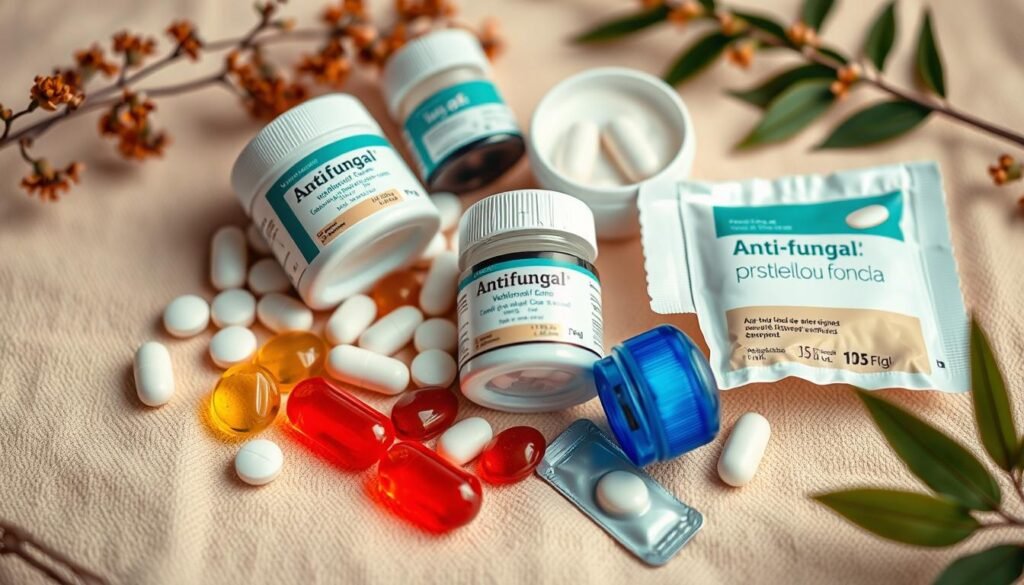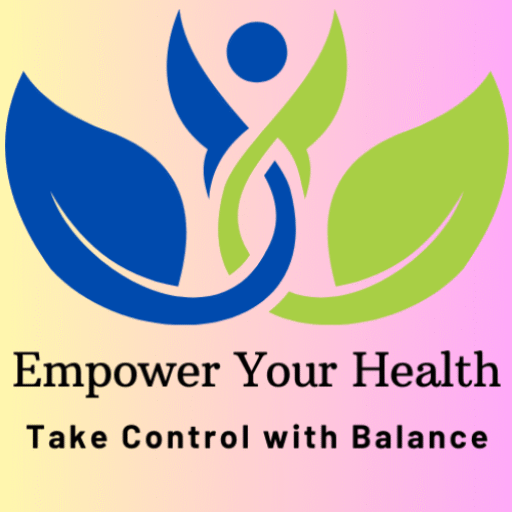Did you know that nearly 75% of women will face vaginal candidiasis at some point? Yet, many find it hard to grasp its causes and how to manage it. This condition, also known as a yeast infection, is a major gynecological issue. It can deeply affect a woman’s health and happiness.
So, what is vaginal candidiasis, and how can you deal with it? Let’s dive into the details of this common but misunderstood problem.
Table of Contents
Key Takeaways
- Vaginal candidiasis, or yeast infection, is a common gynecological condition affecting up to 75% of women.
- The primary cause is an overgrowth of the Candida albicans fungus, which normally exists in the vagina in small quantities.
- Symptoms can include itching, burning, redness, and a thick, white discharge, but some women may experience no symptoms at all.
- Effective treatment options include over-the-counter and prescription antifungal medications, as well as natural remedies in some cases.
- Understanding the risk factors and prevention strategies can help women maintain a healthy vaginal microbiome and reduce the likelihood of recurrent infections.
Understanding Vaginal Candidiasis and Its Impact on Women’s Health
Vaginal candidiasis, or a yeast infection, is a common problem for many women. It’s caused by an overgrowth of Candida albicans, a fungus that lives in the vagina. When there’s too much of it, it can cause uncomfortable symptoms.
The Role of Candida Albicans in Vaginal Health
Candida albicans is a yeast that lives in the vagina. In a healthy body, it lives in balance with other microorganisms. But, if this balance is broken, Candida can grow too much, causing a yeast infection.
Common Misconceptions About Yeast Infections
Many people think yeast infections come from poor hygiene or are sexually transmitted. But, they can happen for many reasons, like hormonal changes or antibiotics. It’s important to clear up these myths to help women understand and manage yeast infections better.
Keeping the vagina healthy is key for women’s overall well-being. By knowing about Candida albicans and debunking myths, women can take steps to prevent and treat yeast infections. This can greatly improve their quality of life.
“Yeast infections are a common, yet treatable, issue that affects many women. Understanding the underlying causes and addressing misconceptions is key to promoting better vaginal health.”
Common Signs and Symptoms of Vaginal Yeast Infections
Vaginal yeast infections, also known as vaginal candidiasis, have several common signs and symptoms. Knowing these can help women spot infections early and get medical help.
Vaginal discharge is a common symptom. It’s thick, white, and looks like cottage cheese. It might smell yeasty or sweet. The amount of discharge can vary, depending on the infection’s severity.
Intense itching in the vaginal area is another symptom. This itching can be very uncomfortable and last a long time. Some women also feel a burning sensation when they pee or have sex.
- Thick, white, cottage cheese-like vaginal discharge
- Intense itching in the vaginal area
- Burning sensation during urination or sexual activity
These symptoms can also mean other vaginal issues, like bacterial vaginosis or STIs. If you notice any, see a healthcare professional for a proper check-up and treatment.
“Prompt recognition and treatment of vaginal yeast infections can help alleviate discomfort and prevent the condition from worsening.”
Knowing the common symptoms of vaginal yeast infections helps women take action. This way, they can keep their vaginal health in check.
Key Risk Factors and Triggers for Vaginal Candidiasis
Vaginal candidiasis, also known as a yeast infection, can be caused by many factors. These factors upset the balance of the vaginal ecosystem. Knowing these risk factors is key to preventing and managing yeast infections.
Hormonal Changes and Their Effect
Hormonal changes can greatly affect vaginal candidiasis. Estrogen levels are especially important for keeping the vaginal pH balanced. Changes in estrogen, like during pregnancy or on birth control, can lead to yeast infections.
Medication-Related Risk Factors
Some medications, especially antibiotics, can raise the risk of vaginal candidiasis. Antibiotics kill good bacteria in the vagina, letting Candida grow. Corticosteroids and some cancer treatments can also cause yeast infections by weakening the immune system.
Lifestyle Contributors
Lifestyle choices can also lead to vaginal candidiasis. Wearing tight, synthetic clothes or not letting the area breathe can help Candida grow. Not keeping the genital area clean can also increase the risk of yeast infections.
Eating too much refined carbohydrates and sugary foods can also upset the vaginal pH. This imbalance can help Candida grow.
By understanding and dealing with these risk factors, women can keep their vagina healthy. This can help prevent yeast infections from coming back.
The Connection Between pH Balance and Vaginal Health
Keeping the right pH balance is key for vaginal health. The vagina naturally has a slightly acidic pH, between 3.8 and 4.5. This acidic environment stops harmful bacteria and fungi, like Candida albicans, from growing too much. This can cause vaginal yeast infections or pH imbalance.
If the vaginal pH gets out of balance, it can attract more harmful microorganisms. This can lead to symptoms like vaginal irritation, discharge, and recurring vaginal health problems.
- Things that can upset the vaginal pH balance include:
- Hormonal changes, like during menstruation, pregnancy, or menopause
- Antibiotics, which can kill off good bacteria that keep pH balanced
- Douching or using harsh feminine hygiene products
- Certain medical conditions, such as diabetes or HIV
To keep the vaginal pH right, you need to make lifestyle changes. Avoid douching and use gentle, pH-balanced products. Also, get medical help if you need it.

“Maintaining a healthy vaginal pH is crucial for preventing and managing a variety of vaginal health issues, including yeast infections and other infections.”
Diagnosing Vaginal Candidiasis: What to Expect
If you think you have a vaginal yeast infection, it’s important to see a doctor. They will check you and do tests to find out what’s wrong. This usually includes a medical exam and lab tests.
Medical Examination Process
Your doctor will first ask about your health and symptoms. They might do a pelvic exam. This lets them see if your vagina and cervix are inflamed or have discharge that looks like cottage cheese.
Laboratory Testing Methods
To make sure, your doctor might do some tests. These include:
- Wet mount analysis: They look at a small sample of discharge under a microscope for Candida fungi.
- Culture test: They send a sample to a lab to see if Candida grows.
- Nucleic acid amplification test (NAAT): This test finds Candida’s genetic material quickly and accurately.
These tests help find out what Candida is causing the problem. Then, your doctor can choose the best treatment for you.
Getting a full medical exam and lab tests is key. It helps your doctor diagnose vaginal candidiasis correctly. This way, you get the right treatment to feel better and get your vaginal health back.
Effective Treatment Options and Medications
If you’re dealing with a vaginal yeast infection, also known as vaginal candidiasis, there are many effective treatments. Over-the-counter antifungal treatments can help, but it’s key to talk to a healthcare professional. This is especially true for infections that keep coming back or are very severe.
The most common antifungal treatments for yeast infections include:
- Topical antifungal creams or suppositories, such as miconazole or clotrimazole, which are applied directly to the affected area.
- Oral antifungal medications, like fluconazole, which are taken as a pill and work systemically to clear the infection.
These treatments usually work well in a few days to a week. It’s important to follow the instructions and finish the treatment. This ensures the infection is fully cleared.
For infections that are hard to treat or keep coming back, a healthcare provider might give a stronger or longer antifungal treatment. They might also suggest ways to prevent future infections.
“Proper treatment and management of vaginal candidiasis is essential for restoring vaginal health and preventing future recurrences.”
It’s crucial to talk openly with your healthcare provider. This ensures you get the best antifungal treatment for your needs.

Natural Remedies and Preventive Measures
Natural remedies and lifestyle changes can help manage and prevent vaginal candidiasis. They address the root causes and support vaginal health. This approach offers a holistic solution for women with recurrent yeast infections.
Dietary Modifications
The foods we eat affect the balance of microorganisms in the vagina. Making dietary changes can help prevent Candida albicans overgrowth. This is the main cause of vaginal yeast infections.
- Eat probiotic-rich foods like yogurt, kefir, and fermented vegetables to restore vaginal flora.
- Reduce refined carbs, sugary foods, and processed items as they feed Candida.
- Include antifungal foods like garlic, coconut oil, and apple cider vinegar to stop yeast growth.
Lifestyle Changes for Prevention
Along with diet, lifestyle changes can prevent vaginal candidiasis:
- Wear breathable, cotton underwear and avoid tight clothes for good hygiene.
- Avoid harsh soaps and douching to keep the vaginal pH balanced.
- Manage stress with meditation, yoga, or deep breathing to boost immunity.
- See a healthcare provider for any medical issues or medications that may cause yeast infections.
Combining natural remedies and lifestyle changes helps maintain vaginal health. This approach reduces the risk of vaginal candidiasis.
| Natural Remedy | Mechanism of Action | Effectiveness |
|---|---|---|
| Probiotics | Restore the balance of beneficial bacteria in the vagina | Moderate to high |
| Garlic | Possess antifungal properties that can inhibit Candida growth | Moderate |
| Apple Cider Vinegar | Maintain a healthy vaginal pH level and create an unfavorable environment for yeast | Moderate |
| Coconut Oil | Exhibit antimicrobial and antifungal activities against Candida | Moderate to high |
“By making simple dietary and lifestyle changes, women can effectively manage and prevent recurrent vaginal yeast infections, ultimately improving their overall vaginal health and well-being.”
When to Seek Medical Attention for Recurring Infections
Vaginal candidiasis, or yeast infection, is common among women. Over-the-counter treatments can help with mild cases. But, sometimes, you need to see a doctor.
Seeing a healthcare provider is key for vaginal yeast infections that keep coming back. Issues like diabetes, weak immune systems, or hormonal imbalances can make infections worse. A doctor can find and fix these problems.
If your symptoms are bad, don’t get better with treatments, or come with fever, pain, or odd discharge, get help. These signs might mean a bigger problem that needs special care.
- Persistent or recurrent vaginal yeast infections
- Severe symptoms that do not respond to over-the-counter remedies
- Symptoms accompanied by fever, pain, or unusual discharge
- Underlying medical conditions that may contribute to recurrent infections
Knowing when to see a doctor is important for your vaginal health. Getting medical attention for vaginal yeast infections can stop problems, ease symptoms, and boost your health.
Conclusion
Vaginal candidiasis, or yeast infections, is common and can be managed. Many women deal with it. Knowing the causes, symptoms, and risk factors helps women take care of their vaginal health.
Proper diagnosis and treatment, including medical and natural remedies, can help. It’s key to address any imbalances, like pH levels or hormonal changes. This ensures long-term vaginal health.
Remember, vaginal health is crucial for overall female health and wellness. By learning and seeking medical advice when needed, we can manage yeast infections well. This keeps our vaginal environment healthy and balanced.
FAQ
What is vaginal candidiasis?
Vaginal candidiasis, also known as a yeast infection, is a common condition. It’s caused by an overgrowth of the fungus Candida albicans in the vagina.
What are the main symptoms of vaginal candidiasis?
The main symptoms include vaginal discharge and itching. You may also feel a burning sensation and discomfort during sex.
What are the leading causes of vaginal candidiasis?
Several factors can lead to vaginal candidiasis. These include hormonal changes, antibiotic use, diabetes, and a weakened immune system.
How is vaginal candidiasis diagnosed?
Diagnosis involves a physical exam and lab tests. These include a vaginal culture or microscopic exam of the discharge.
What are the treatment options for vaginal candidiasis?
Treatment includes over-the-counter and prescription antifungal meds. These come as creams, ointments, or oral tablets.
Can vaginal candidiasis be prevented?
Yes, several measures can help prevent it. These include good vaginal hygiene, avoiding douching, and wearing loose, breathable clothing.
When should I seek medical attention for vaginal candidiasis?
Seek medical help if symptoms are severe or if the infection keeps coming back. Also, if you’re unsure of the diagnosis.
Can diet and lifestyle changes affect vaginal candidiasis?
Yes, diet and lifestyle changes can help. Limiting sugar and refined carbs and managing stress can prevent and manage the infection.



